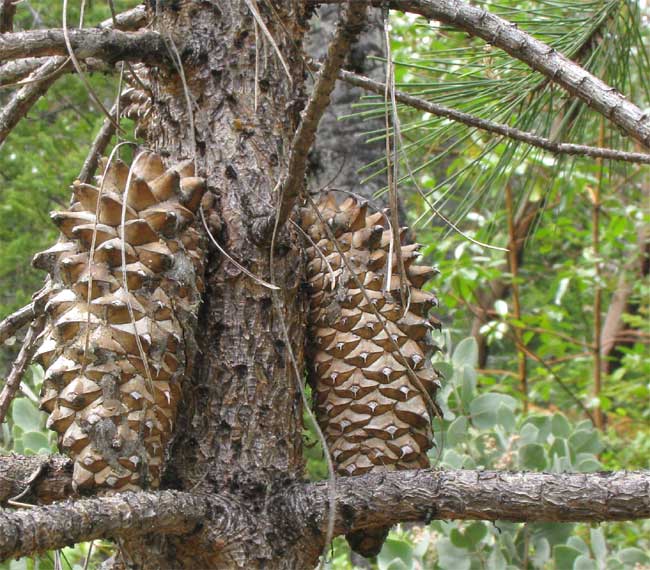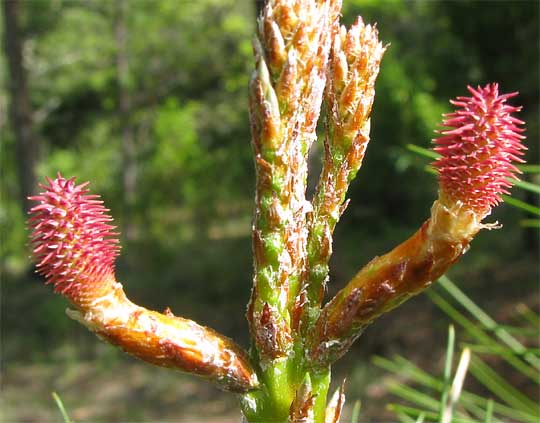Excerpts from Jim Conrad's
Naturalist Newsletter

from the the May 10, 2009 Newsletter, issued from the Siskiyou Mountains west of Grants Pass, Oregon:
THE KNOBCONE PINE'S KNOBBY CONES
Nowhere on Earth is home to a greater diversity of conifers than here, and the largest group of conifers we have is that of the pines. Therefore you might expect some interesting pine species. The Knobcone Pine, PINUS ATTENUATA, endemic to southwestern Oregon and parts of California, is one of those, and one of the most peculiar features of that pine is shown above.
There you see the Knobcone's cones. A curious thing about them is how they arise directly from the tree's trunk. Sometimes you see four cones arising at a single node on a trunk. Cones also can occur on branches, but they're always way back where the needles have fallen off, looking plain awkward stuck right on the twig like that instead of gracefully nestled among needles the way a decent pinecone should be.
Notice that these cones aren't open. Though they look mature, there's nowhere for seeds to fall out. That's something else remarkable about them: Not only may the cones stay stuck to the sides of the trunks and larger limbs for years (sometimes trunks grow around them so that later a sawmill operator might cut through a cone embedded in the wood) but also the cones may remain closed the whole time. These cones are designed to stay closed for 20 years or more until subjected to high heat. In other words, Knobcone Pines have evolved so that when forest fires sweep through an area they may have twenty or more years of viable seeds stored up they can release, and thus have a competitive advantage over other species in getting their seedlings established. Cones also appear on very young trees, at chest height.
Nowadays you can find cones in their earliest stage of development, and they eye-catching things, as seen below:

It's unusual how the cones are held aloft on long, sturdy stems. Best I can tell, the pointy, red things will develop into the spines at the tip of the cone's fused scales.

Above you see more developed cones. Notice how these older cones are starting to bend downward. Eventually the trunk will grow around the long cone stems leaving the cones practically stemless. I think these may be last spring's egg-size cones, for Knobcone Pine cones need two years to mature.
Ecologically, Knobcone Pines grow on thin, problematic soils. If there's a slope that's been burned and the topsoil eroded away, Knobcones may dominate. You find them occupying eroded roadcuts beside long-established forest roads, and in the thin, acidic soil at the edge of serpentine barrens. Knobcones are a tough species, one with very sophisticated adaptations, and when I pass among them I give them a nod as a particularly highly developed species able to survive where other pines cannot.